Almost every business today relies on some form of technology. The software used can be a deciding factor for the competitiveness of the business. This makes it crucial for businesses to invest in the software development of their product. However, calculating the average cost of software development is not just about adding hourly rates. Multiple aspects determine the average cost of software development , such as the project’s size, scope, complexity, scalability, technology used, and even the developer’s location.
As per Market and Markets research statistics, it is predicted that the business landscape software development is growing rapidly, with a CAGR of 9.1%, i.e., the market value is predicted to grow from $1.11 trillion in 2025 to $1.86 trillion in 2031. The choice of technology stack may differ across various industries, but one thing is that, with such tremendous revolution in tech, the average cost of software development continues to become more transparent
Software Development Cost: An Overview
Understanding software development costs isn’t just about balancing the books—it’s about making wise choices for the future of your business. Whether building a simple mobile app or a sprawling enterprise platform, knowing what to expect helps you plan better, avoid surprises, and find the right partners for success. The guide we have put together will help you understand the general cost of software apps in the market. We will analyze the in-house vs. outsourcing and give recommendations on how to achieve a good balance between cost & quality.
What Is The General Cost Range of Software Development?
The spectrum of development costs is broad, reflecting a variety in project ambition and complexity.
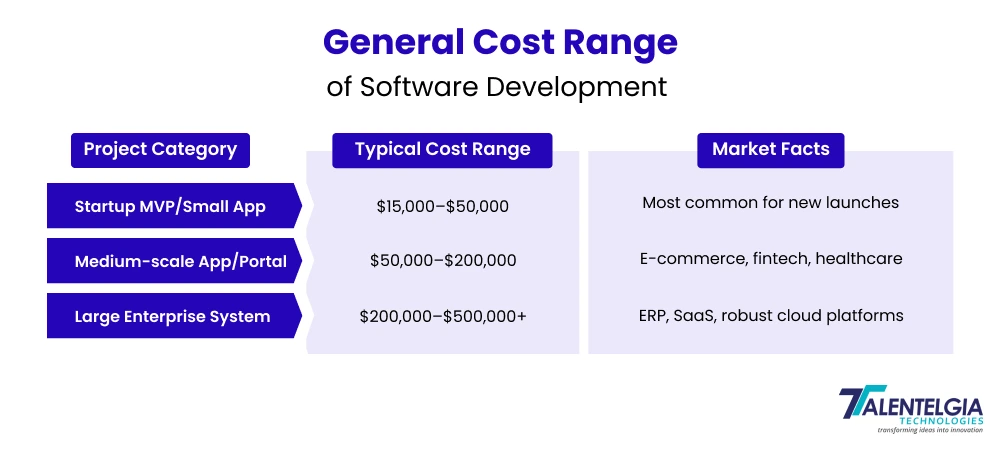
A simple mobile app or info portal usually falls within $25,000–$80,000, while fully-featured software with AI and integrations goes much higher, especially when developed through AI App Development Services.
What are the Major Cost Factors of Developing Software?
Every dollar invested in software development has a backstory. These influences shape your final invoice:
- Project complexity: The more features, integrations, and user roles you need, the higher the price.
- Team location: Local teams command higher rates than offshore developers—but may offer tighter communication.
- Technology stack: New, high-demand frameworks can push costs up, while open-source stacks help trim budgets.
- Timeline: Rushed delivery typically costs more—think overtime and resource crunches.
- Pricing model: Fixed bids align with clear scopes; hourly rates work well for evolving projects. Dedicated teams suit long-term builds.
- Compliance & maintenance: Regulated industries (healthcare, finance) and ongoing support add to the tab.
Software Development Cost Factors: Price Breakdown
The cost of software development can vary greatly depending on multiple factors. While the technical details and complexity of the application significantly influence the final price, non-technical elements also play a crucial role in shaping the overall budget. Ultimately, each project is unique, and costs will differ accordingly.
| Factor | Impact | Industry Notes |
| Complexity | More features = higher costs | Advanced logic & integrations up prices |
| Tech Stack | Modern tech increases budgets | AI/ML, blockchain raises costs 15-25% |
| Location | Local vs. offshore creates variance | Outsourcing often halves the cost |
| Pricing Model | Predictability vs. flexibility | Fixed price for clarity, hourly for agility |
| Compliance | Security/legal can be expensive | Healthcare/finance can add $20k–$80k |
| Timeline | Fast delivery usually costs more | Many firms charge a premium for speed |
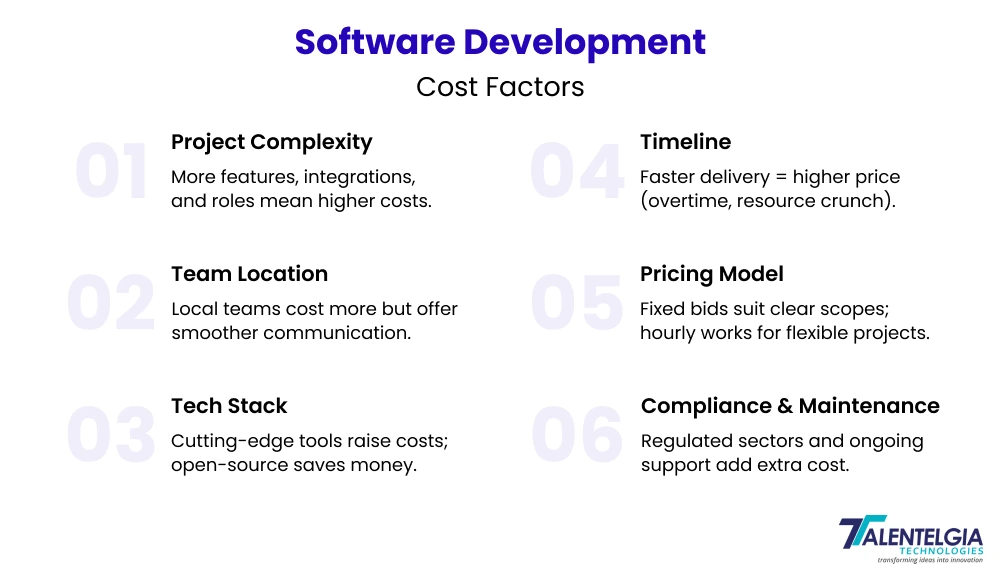
1. Software Type
Different digital projects carry different price tags, depending on their scope, backend, and long-term ambitions. Simple sites or one-feature MVPs are cost-efficient, but scale, complexity, and security requirements drive up the total rapidly.
| Software Type | 2025 Estimate | Example Projects |
| Info Website/Portfolio | $5,000–$20,000 | Small businesses, freelancers |
| MVP/Product Prototype | $10,000–$200,000 | Beta apps, fundraising launches |
| Web/Mobile App | $25,000–$80,000 | E-commerce, utility apps |
| AI/SaaS Data Platform | $75,000–$2,000,000 | Analytics, subscription platforms |
| Enterprise Solution | $200,000–$500,000+ | High-stakes, regulated industries |
Features, support, scaling, and ongoing upgrades all contribute to the final bill.
2. Hourly Rates & Regional Differences
Hourly rates are the backbone of software project budgeting, and they fluctuate based on team size, skillset, and geography. The US leads in premium prices, while India, Vietnam, and Eastern Europe offer high value for cost-conscious teams.
| Region | Avg. Hourly Rate | Typical Projects/Models |
| North America | $100–$200 | Enterprise, custom SaaS |
| Europe | $70–$120 | Agencies, startups |
| India/E. Europe | $20–$65 | Outsourcing, MVP, SMB |
| UK | £70–£120 | Financial and web builds |
| Global Average | $20–$99 | Most builds, competitive pricing |
More than 80% of teams worldwide operate between $20 and $99/hour, and the market remains stable and predictable for most buyers.
3. Estimating the Cost of The Project
An effective estimation process is crucial for staying on budget. This starts with listing must-have features, choosing practical tech stacks, and mapping phases and milestones. Most firms recommend adding 15-25% to initial estimates for support and maintenance—numbers borne out by years of post-launch data.
| Step | Explanation | Tip |
| Feature List | Define core and extra functions | Prioritize what matters now |
| Tech Stack | Pick familiar, supported tech | Consult experts for advice |
| Timeline & QA | Map out sprints, milestones | Flexibility saves resources |
| Deployment/Support | Support after launch | Typical spend is 15-25% /year |
| Consultation | Get multiple quotes and breakdowns | Look for clarity in contracts |
Transparent estimates keep surprises and overruns to a minimum—and happy clients coming back.
4. Hidden or Extra Costs
Many teams find costs ballooning after launch. Overlooked bugs, cloud fees, compliance, and change requests quickly increase the total bill. Maintenance, even for simple builds, regularly runs $5,000–$20,000/year, and major upgrades or pivots often require extra rounds of funding.
| Hidden Cost | Description | Typical Impact |
| Maintenance | Fixes, updates, performance boosts | $5,000–$20,000 annually |
| Hosting/Cloud | Infrastructure, data, bandwidth | $100–$500/mo, rising yearly |
| Feature Creep | Unplanned extras | 15–30% total cost increase |
| Revision Cycles | New requests from users/market | Successive changes drive cost |
| Compliance | Security, legal requirements | $5,000–$20,000+ can be typical |
More companies now budget extra up front—and report fewer headaches after launch.
9 Best Tips for Software Cost Optimization
Reducing the cost of software development is less about cutting corners and more about innovative strategies that maintain quality while maximizing budget efficiency. Here are some practical, proven approaches to optimize your software development investment:
- Start with a Minimum Viable Product (MVP):
Focus on launching a product with only the core features necessary to solve the primary user problem. This lets you release quickly, get honest user feedback, and avoid spending on features that users may not need or want. MVPs often cost 40-60% less in the initial phase compared to fully-featured products.
- Choose the Right Development Location:
Outsourcing to countries like India, Vietnam, or Eastern Europe can reduce costs by 40-70% due to lower hourly rates. However, success depends on choosing skilled vendors, maintaining clear communication, and effective project management to prevent quality issues or delays.
- Leverage Existing Frameworks and Open-Source Libraries:
Building upon proven, community-supported components accelerates development and reduces costs associated with writing code from scratch. Open-source solutions provide battle-tested functionality and are often free, cutting down licensing fees. Be sure to evaluate licenses and ensure compliance to avoid any legal surprises.
- Implement Agile Development Methodologies:
Agile promotes iterative development, frequent communication, and flexibility in adjusting scope. This approach leads to earlier detection of issues and reduces costly rework later in the project. Many companies also leverage the principles of Agile & Scrum in Software Development, experiencing 20–30% lower development costs and faster time to market compared to traditional Waterfall models.
- Invest in Automated Testing and Continuous Integration/Delivery (CI/CD):
Automated testing saves time by running repeated test cases quickly and ensures higher code quality. Early bug detection through automated tests prevents expensive fixes post-deployment—studies report that fixing bugs after release costs up to 15 times more than during development. CI/CD pipelines streamline deployment and reduce manual errors.
- Design for Reusable Components:
Architect your software with modular, reusable components. Though this may slightly increase initial development time, it pays off by enabling faster future development, simpler maintenance, and consistent quality across projects.
- Conduct Thorough Planning and Discovery Phases:
Effective upfront planning avoids scope creep and late surprises. Clarifying requirements and project scope well before development starts keeps the team aligned and the budget under control.
- Use Cloud-Based Infrastructure Wisely:
Cloud services like AWS, Microsoft Azure, or Google Cloud offer scalable resources and reduce the need for costly hardware. But watch out for over-provisioning—up to 70% of cloud spend can be wasted if not properly managed. Employing cloud cost management tools helps align expenses closely with actual usage.
- Optimize Team Structure:
Balancing in-house expertise with offshore specialists can provide the best mix of quality and cost. Core, high-impact roles may stay local, while repetitive or specialized tasks are handed off to remote teams.
Also Read: Proof of Concept in Software Development: Steps & Benefits
Conclusion
Software development is a marathon—not a sprint. The best projects start with a clear scope, realistic budgeting, and honest dialogue about actual costs and ongoing support. As the 2025 market grows and diversifies, smart teams will combine ambition with strategic planning to drive lasting results and robust digital products.
If you want to develop a software application for your business, Connect With Expert Developers Today!
Get a custom quote and expert help to bring your MVP to life!


 Healthcare App Development Services
Healthcare App Development Services
 Real Estate Web Development Services
Real Estate Web Development Services
 E-Commerce App Development Services
E-Commerce App Development Services E-Commerce Web Development Services
E-Commerce Web Development Services Blockchain E-commerce Development Company
Blockchain E-commerce Development Company
 Fintech App Development Services
Fintech App Development Services Fintech Web Development
Fintech Web Development Blockchain Fintech Development Company
Blockchain Fintech Development Company
 E-Learning App Development Services
E-Learning App Development Services
 Restaurant App Development Company
Restaurant App Development Company
 Mobile Game Development Company
Mobile Game Development Company
 Travel App Development Company
Travel App Development Company
 Automotive Web Design
Automotive Web Design
 AI Traffic Management System
AI Traffic Management System
 AI Inventory Management Software
AI Inventory Management Software
 AI Software Development
AI Software Development  AI Development Company
AI Development Company  AI App Development Services
AI App Development Services  ChatGPT integration services
ChatGPT integration services  AI Integration Services
AI Integration Services  Generative AI Development Services
Generative AI Development Services  Natural Language Processing Company
Natural Language Processing Company Machine Learning Development
Machine Learning Development  Machine learning consulting services
Machine learning consulting services  Blockchain Development
Blockchain Development  Blockchain Software Development
Blockchain Software Development  Smart Contract Development Company
Smart Contract Development Company  NFT Marketplace Development Services
NFT Marketplace Development Services  Asset Tokenization Company
Asset Tokenization Company DeFi Wallet Development Company
DeFi Wallet Development Company Mobile App Development
Mobile App Development  IOS App Development
IOS App Development  Android App Development
Android App Development  Cross-Platform App Development
Cross-Platform App Development  Augmented Reality (AR) App Development
Augmented Reality (AR) App Development  Virtual Reality (VR) App Development
Virtual Reality (VR) App Development  Web App Development
Web App Development  SaaS App Development
SaaS App Development Flutter
Flutter  React Native
React Native  Swift (IOS)
Swift (IOS)  Kotlin (Android)
Kotlin (Android)  Mean Stack Development
Mean Stack Development  AngularJS Development
AngularJS Development  MongoDB Development
MongoDB Development  Nodejs Development
Nodejs Development  Database Development
Database Development Ruby on Rails Development
Ruby on Rails Development Expressjs Development
Expressjs Development  Full Stack Development
Full Stack Development  Web Development Services
Web Development Services  Laravel Development
Laravel Development  LAMP Development
LAMP Development  Custom PHP Development
Custom PHP Development  .Net Development
.Net Development  User Experience Design Services
User Experience Design Services  User Interface Design Services
User Interface Design Services  Automated Testing
Automated Testing  Manual Testing
Manual Testing  Digital Marketing Services
Digital Marketing Services 
 Ride-Sharing And Taxi Services
Ride-Sharing And Taxi Services Food Delivery Services
Food Delivery Services Grocery Delivery Services
Grocery Delivery Services Transportation And Logistics
Transportation And Logistics Car Wash App
Car Wash App Home Services App
Home Services App ERP Development Services
ERP Development Services CMS Development Services
CMS Development Services LMS Development
LMS Development CRM Development
CRM Development DevOps Development Services
DevOps Development Services AI Business Solutions
AI Business Solutions AI Cloud Solutions
AI Cloud Solutions AI Chatbot Development
AI Chatbot Development API Development
API Development Blockchain Product Development
Blockchain Product Development Cryptocurrency Wallet Development
Cryptocurrency Wallet Development About Talentelgia
About Talentelgia  Our Team
Our Team  Our Culture
Our Culture 
 Healthcare App Development Services
Healthcare App Development Services Real Estate Web Development Services
Real Estate Web Development Services E-Commerce App Development Services
E-Commerce App Development Services E-Commerce Web Development Services
E-Commerce Web Development Services Blockchain E-commerce
Development Company
Blockchain E-commerce
Development Company Fintech App Development Services
Fintech App Development Services Finance Web Development
Finance Web Development Blockchain Fintech
Development Company
Blockchain Fintech
Development Company E-Learning App Development Services
E-Learning App Development Services Restaurant App Development Company
Restaurant App Development Company Mobile Game Development Company
Mobile Game Development Company Travel App Development Company
Travel App Development Company Automotive Web Design
Automotive Web Design AI Traffic Management System
AI Traffic Management System AI Inventory Management Software
AI Inventory Management Software AI Software Development
AI Software Development AI Development Company
AI Development Company ChatGPT integration services
ChatGPT integration services AI Integration Services
AI Integration Services Machine Learning Development
Machine Learning Development Machine learning consulting services
Machine learning consulting services Blockchain Development
Blockchain Development Blockchain Software Development
Blockchain Software Development Smart contract development company
Smart contract development company NFT marketplace development services
NFT marketplace development services IOS App Development
IOS App Development Android App Development
Android App Development Cross-Platform App Development
Cross-Platform App Development Augmented Reality (AR) App
Development
Augmented Reality (AR) App
Development Virtual Reality (VR) App Development
Virtual Reality (VR) App Development Web App Development
Web App Development Flutter
Flutter React
Native
React
Native Swift
(IOS)
Swift
(IOS) Kotlin (Android)
Kotlin (Android) MEAN Stack Development
MEAN Stack Development AngularJS Development
AngularJS Development MongoDB Development
MongoDB Development Nodejs Development
Nodejs Development Database development services
Database development services Ruby on Rails Development services
Ruby on Rails Development services Expressjs Development
Expressjs Development Full Stack Development
Full Stack Development Web Development Services
Web Development Services Laravel Development
Laravel Development LAMP
Development
LAMP
Development Custom PHP Development
Custom PHP Development User Experience Design Services
User Experience Design Services User Interface Design Services
User Interface Design Services Automated Testing
Automated Testing Manual
Testing
Manual
Testing About Talentelgia
About Talentelgia Our Team
Our Team Our Culture
Our Culture
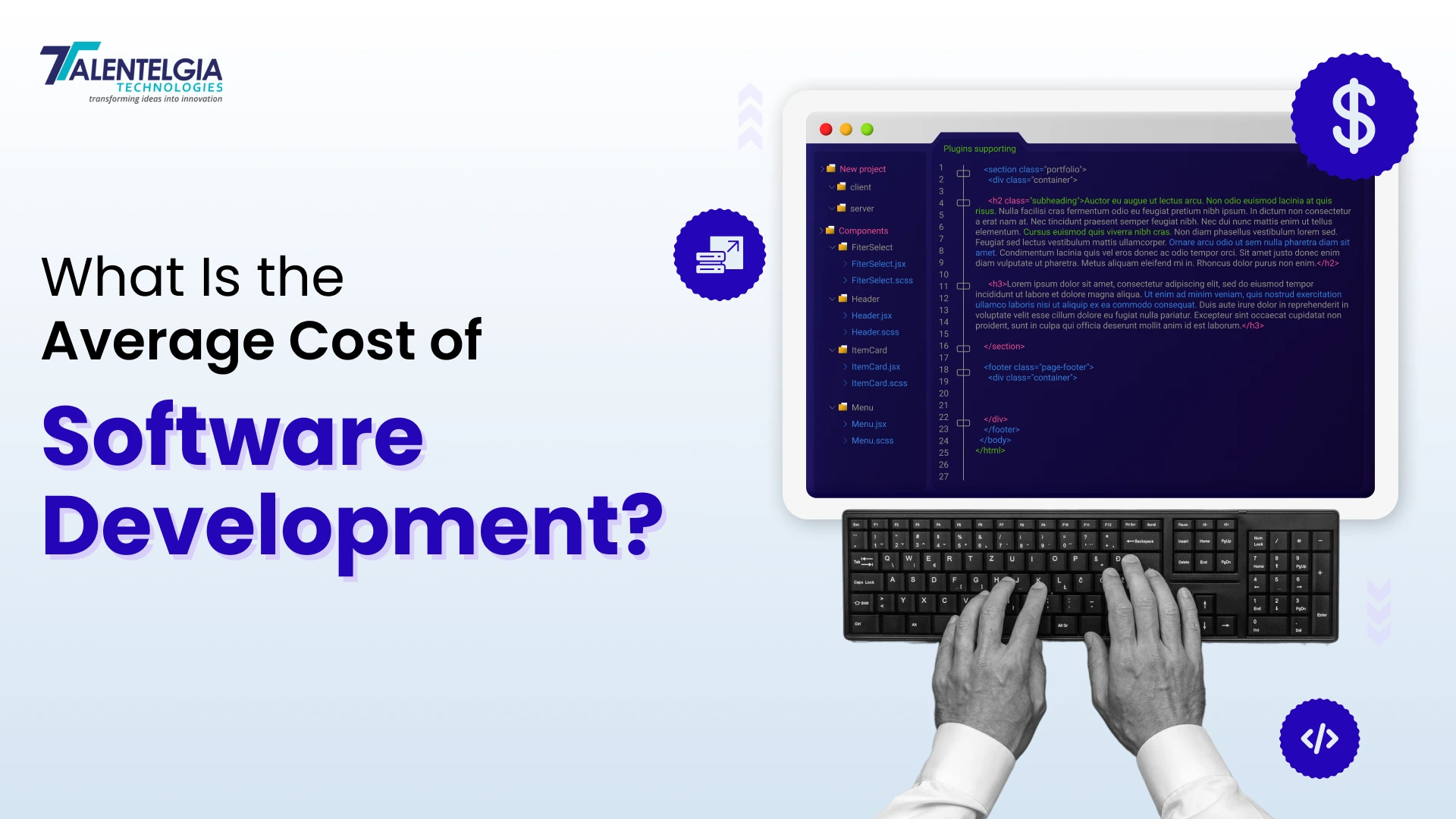

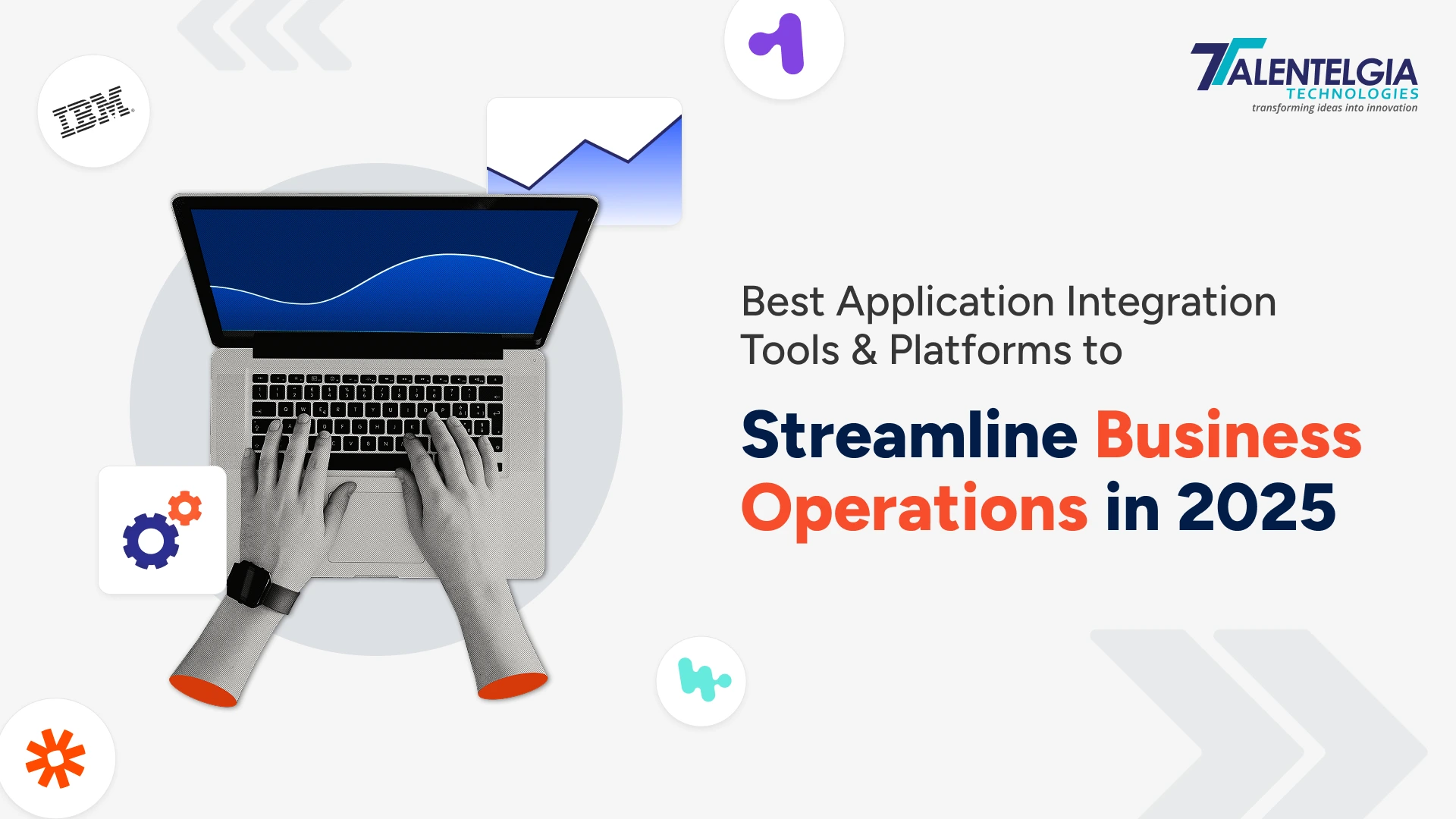


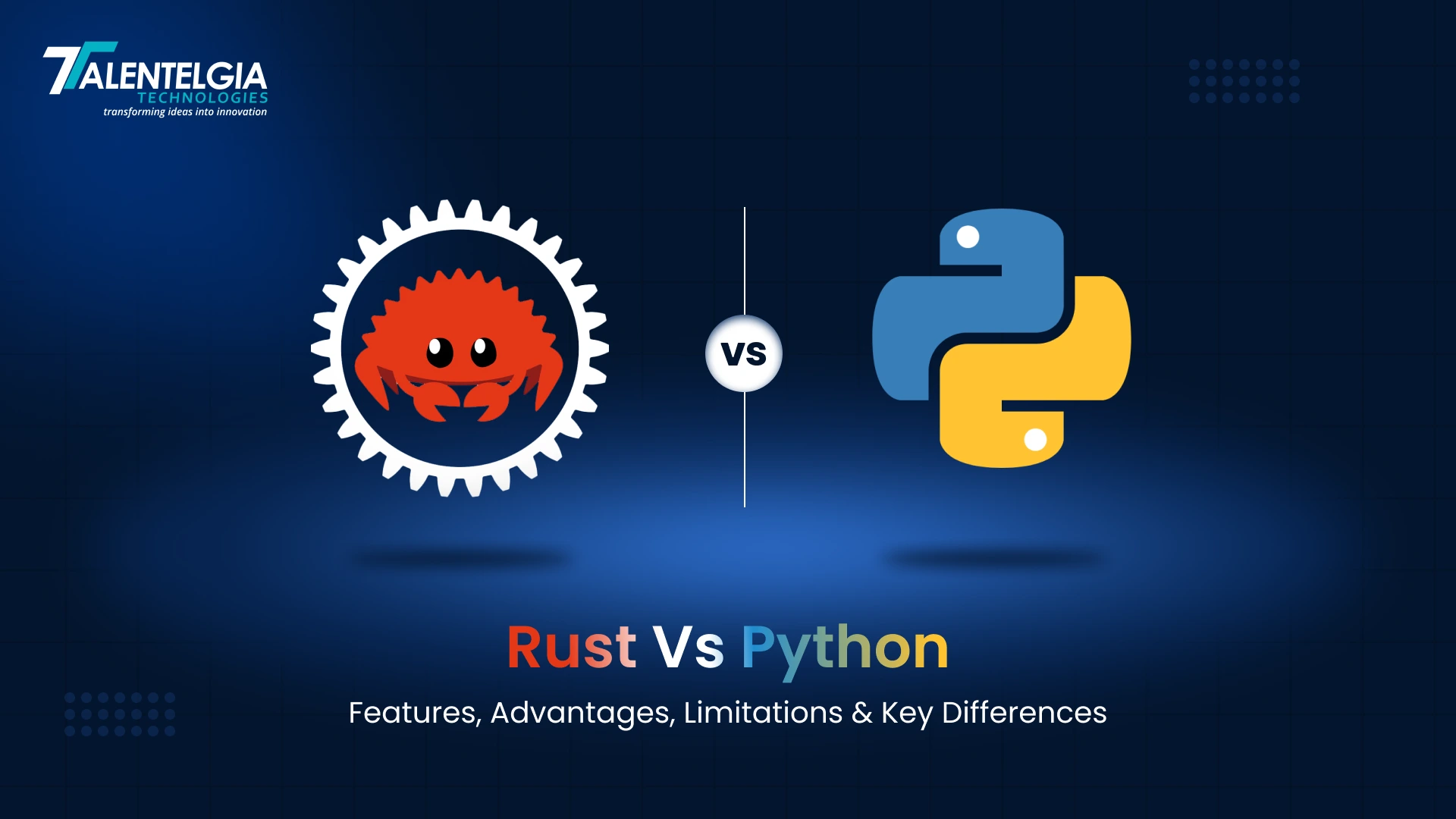










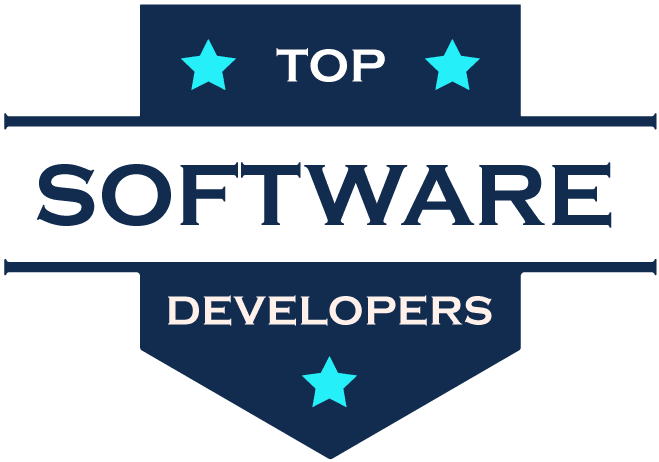
 Write us on:
Write us on:  Business queries:
Business queries:  HR:
HR: 




